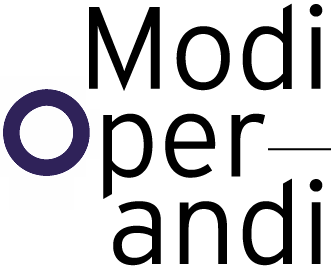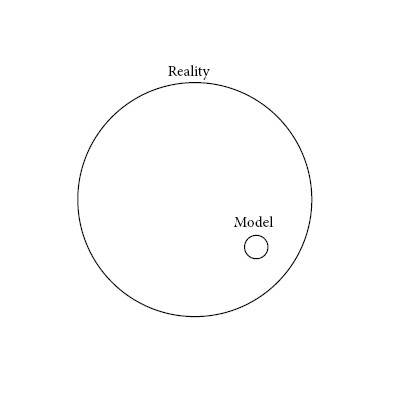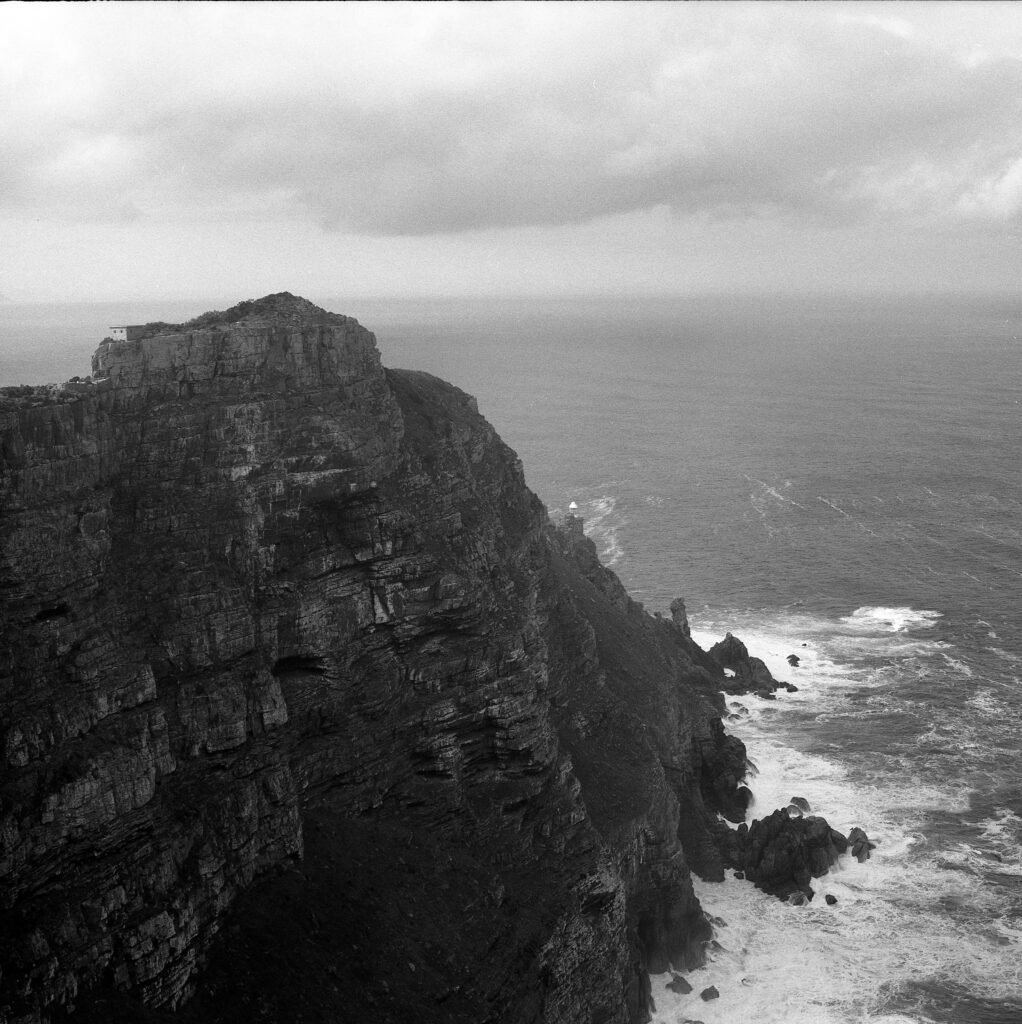THE IMAGE AND THE MODEL
Much like the image, we generate models that mimic properties of reality. In turn the model is studied and analyzed and understood in order to make projective analysis and speculation about the ‘real’ world which contains the model. Models often have a coherent internal logic, a consistent pattern, a recurring set of behaviors that make them predictable, and so our use of these models in analyzing reality generates a world in which we anticipate certain things to happen based on a model of our own construction. However, the world is not as we made it of our own construction.
As such we can use a mathematical notation to understand that on the one hand, reality does not equal the model, while at the same time, reality as a set contains the model within it. While the model still technically adheres to the physical laws that govern the larger context, it is framed off, closed from the open systems of the actual, and ‘scaled down’ such that measure and impact have greater margin for error when scaled back to the reality of 1:1.
Reality ≠ Model
Reality = {Model}
In the words of Walter Benjamin, ‘The concept of technique represents the dialectical starting-point from which the sterile dichotomy of form and content can be surmounted.’ [5] Sterile because form and content emerge together, are necessarily linked and dependent on each other, and ignoring their social, and temporal context reduces their relationship greatly.
It is as a result of technique that a work comes into being – it is the method and process by which formation transpires as opposed to stagnant form, and in doing so the work becomes encrusted with a surface that encloses the content within. And so the question for this paper and for any thing would be: what is its content, where are its limits, its framing, or surface that encloses it and provides form, and perhaps most importantly how have they been generated?
The difficulty within this paper is its attempt to define a trap that it itself is desperately trying to avoid falling into: the pinning down of an idea, a false sense of security by causing its stagnation and death. The paper is a critique on the measure, and the description and simulation of a behavior of that encrusted surface that is in constant movement.
Much like the lighthouse, which serves to warn of danger, the boat trying to circumnavigate a peninsula does not set course directly for that beacon to find out what the danger might be but rather sails by at a distance, along its periphery. That periphery is necessarily dependent on the beacon, on the promise of danger towards it. At the same time however, the boat traveling along the periphery provides no independent confirmation of those rocks which it seeks to avoid (there is no collision). It is by virtue of the fact that the boat stays sailing, that it proves the rock-free nature of the waters it sails.
As a result, this paper, as an experiment on the form of the essay, seeks to circumnavigate its own content. Always regarding the dangers of the measure and precision from the sidelines outskirts, without risking collision by claiming to execute such precision itself. In its structure, pages of the essay may fall into place like leaves of a tree in autumn, to be read as it has been written: fragmentary, leaping from one page to the next, getting lost in its content, in order to find one’s self again.
That is to say, the surface as a fluid – not necessarily the fluid surface, however this is where one might begin as a means to analyze and conjecture on the nature of surfaces at large, ie the nature of all surfaces, but also, the surface as something that has effectively escaped capture.
‘The depth has to be hidden. Where? On the surface. [6] Indeed the surface contains more depth than what initially meets the eye – the material world is necessarily textured and rough. Much like the geological formation of mountains, which so clearly express their internal stresses and external erosions in rock faces as John Ruskin describes in his conception of the Deep Surface, all matter in its formation develops a surficial crust – evidence of external and internal forces. [7] The world is rough, and space is textured since it is no abstract concept, but exists within the material world.


